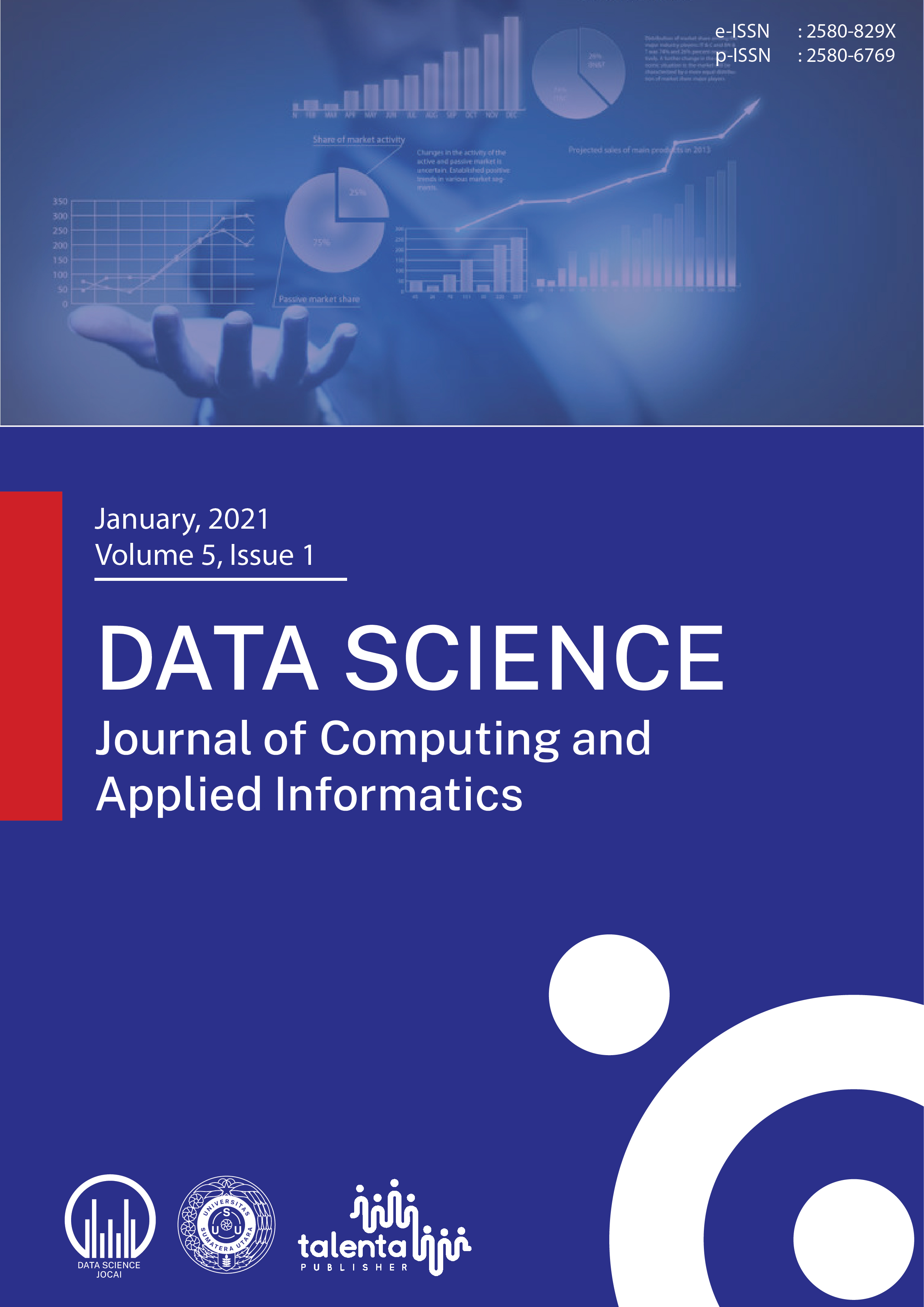Experimenting Diabetic Retinopathy Classification Using Retinal Images
DOI:
https://doi.org/10.32734/jocai.v5.i1-5232Keywords:
Diabetic Retinopathy, Image Processing, Deep Learning, CNNAbstract
Along with many complications, diabetic patients have a high chance to suffer from critical level vision loss and in worst case permanent blindness due to Diabetic Retinopathy (DR). Detecting DR in the early stages is a challenge, since it has no visual indication of this disease in its preliminary stage, thus becomes an important task to accomplish in the health sector. Currently, there have been many proposed DR classifier models but there is a lot of room to improve in terms of efficiency and accuracy. Despite having strong computational power, current deep learning algorithm is not able to gain the trust of the medical experts in classifying DR. In this work, we investigate the possibility of classifying DR using deep learning with Convolutional Neural Network (CNN). We implement preprocessing combined with InceptionV3 and VGG16 models. Experimental results show that InceptionV3 outperforms VGG16. InceptionV3 model achieves an average training accuracy of 73.5 % with a validation accuracy of 68.7%. VGG16 model achieves an average training accuracy of 66.4% with a validation accuracy of 63.13%. The highest training accuracy for InceptionV3 and VGG16 is 79% and 81.2%, respectively. Overall, we achieve an accuracy of 66.6% on 52 images from 3 different classes.
Downloads
References
L. Guariguata, D. R. Whiting, I. Hambleton, J. Beagley, U. Linnenkamp, and J. E. Shaw, “Global estimates of diabetes prevalence for 2013 and projections for 2035,†Diabetes Res. Clin. Pract., vol. 103, no. 2, pp. 137–149, 2014.
M. R. K. Mookiah, U. R. Acharya, C. K. Chua, C. M. Lim, E. Y. K. Ng, and A. Laude, “Computer-aided diagnosis of diabetic retinopathy: A review,†Comput. Biol. Med., vol. 43, no. 12, pp. 2136–2155, 2013.
M. A. Bravo and P. A. Arbeláez, “Automatic diabetic retinopathy classification,†in 13th International Conference on Medical Information Processing and Analysis, 2017, vol. 10572, p. 105721E.
G. Quellec, K. Charrière, Y. Boudi, B. Cochener, and M. Lamard, “Deep image mining for diabetic retinopathy screening,†Med. Image Anal., vol. 39, pp. 178–193, 2017.
Y. Liu, Y. Guo, T. Georgiou, and M. S. Lew, “Fusion that matters: convolutional fusion networks for visual recognition,†Multimed. Tools Appl., vol. 77, no. 22, pp. 29407–29434, 2018.
R. Girshick, J. Donahue, T. Darrell, and J. Malik, “Rich feature hierarchies for accurate object detection and semantic segmentation,†in Proceedings of the IEEE conference on computer vision and pattern recognition, 2014, pp. 580–587.
H. Pratt, F. Coenen, D. M. Broadbent, S. P. Harding, and Y. Zheng, “Convolutional neural networks for diabetic retinopathy,†Procedia Comput. Sci., vol. 90, pp. 200–205, 2016.
N. Tajbakhsh et al., “Convolutional neural networks for medical image analysis: Full training or fine tuning?,†IEEE Trans. Med. Imaging, vol. 35, no. 5, pp. 1299–1312, 2016.
H. Gao, “A walk-through of AlexNet,†Mediu. Corp., Aug, vol. 7, 2017.
A. P. James and B. V Dasarathy, “Medical image fusion: A survey of the state of the art,†Inf. fusion, vol. 19, pp. 4–19, 2014.
R. F. Mansour, “Deep-learning-based automatic computer-aided diagnosis system for diabetic retinopathy,†Biomed. Eng. Lett., vol. 8, no. 1, pp. 41–57, 2018.
V. Kurama, “A Review of Popular Deep Learning Architectures: resNet, InceptionV3, and SqueezeNet,†Consult. August, vol. 30, 2020.
D. Frossard, VGG in Tensor Flow, https://www.cs.toronto.edu/~frossard/post/vgg16/, 17 June 2016, retrieved December 17, 2020
M. Mateen, J. Wen, M. Hassan, N. Nasrullah, S. Sun, and S. Hayat, “Automatic detection of diabetic retinopathy: a review on datasets, methods and evaluation metrics,†IEEE Access, vol. 8, pp. 48784–48811, 2020.
H. Pang, C. Luo, and C. Wang, “Improvement of the application of diabetic retinopathy detection model,†Wirel. Pers. Commun., vol. 103, no. 1, pp. 611–624, 2018.
L. Zhou, Y. Zhao, J. Yang, Q. Yu, and X. Xu, “Deep multiple instance learning for automatic detection of diabetic retinopathy in retinal images,†IET Image Process., vol. 12, no. 4, pp. 563–571, 2017.
Downloads
Published
How to Cite
Issue
Section
License
Copyright (c) 2021 Data Science: Journal of Computing and Applied Informatics

This work is licensed under a Creative Commons Attribution-ShareAlike 4.0 International License.















